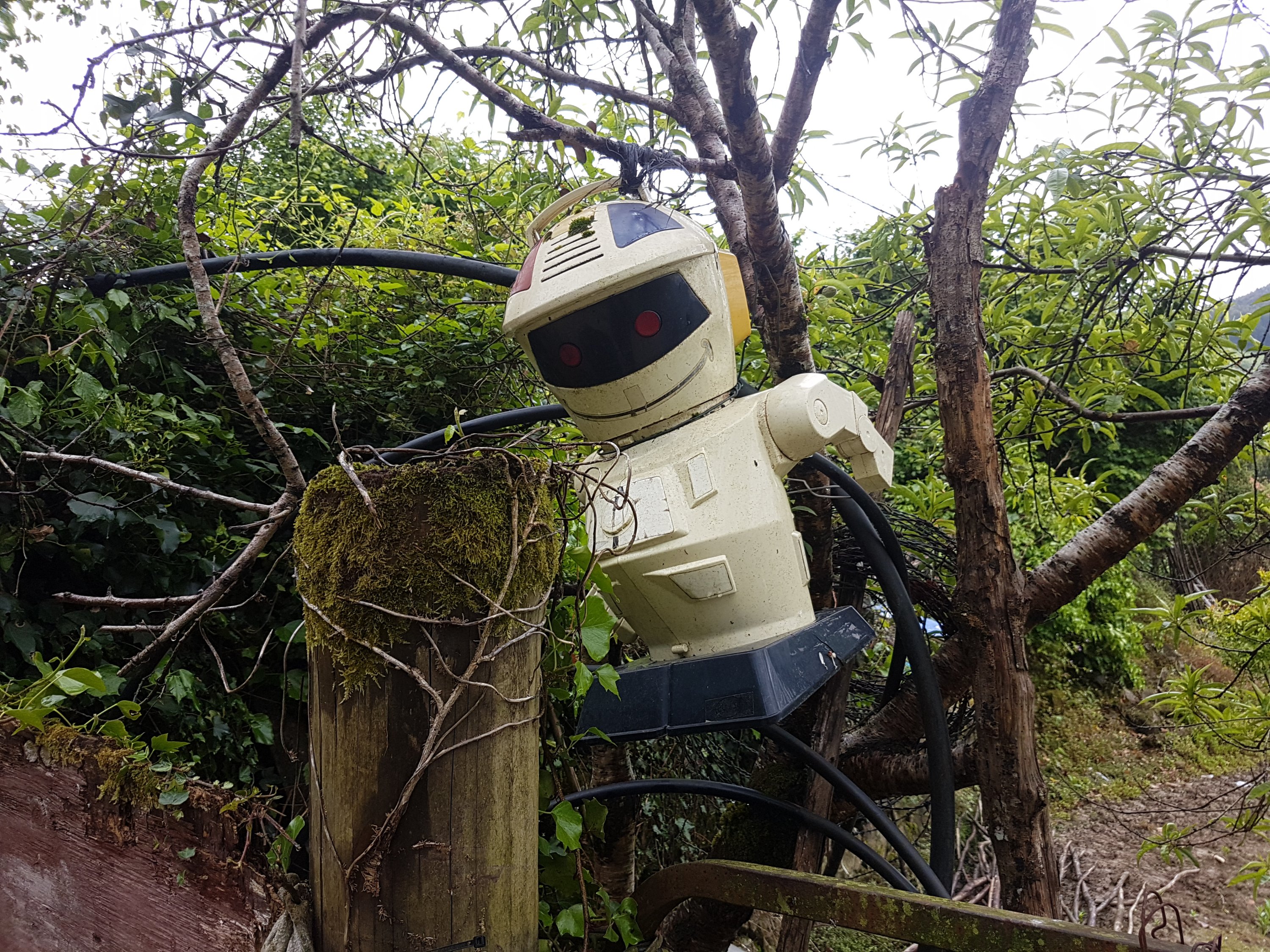
A convent was followed by a monastery (5 Cistercians at the last count), before we surrendered the high life for a night in an apartment in the centre of Gernika. This was the last day of walking for Sean, Penny and Hugh. Great companions and it was amazing to have covered so much ground in such a short space of time.
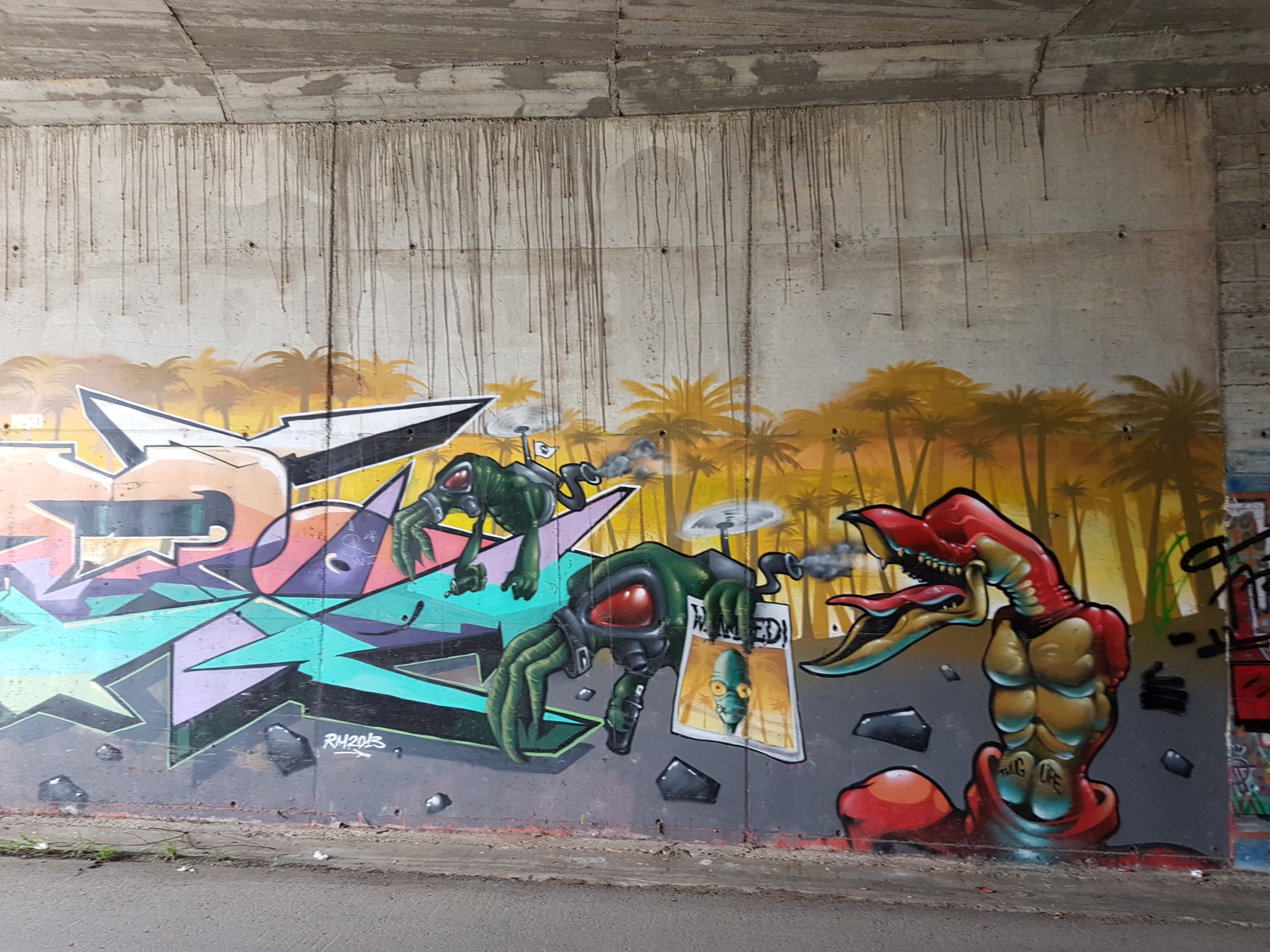

We had planned a rest day, but instead, made a short walk up to a beautiful albergue run by a young family who served the most incredible food for our dinner.
Onwards to Bilbao and the lure of legendary pinxos. Apparently many peregrinos forsake the final 7 kilometres into town and take the bus or train. Wilkie was having none of that. It was in fact a great end to the walk, scaling yet another long hill (ok not so great) before seeing the city spread out below and winding down through parks and streets to our hostel in the old town.

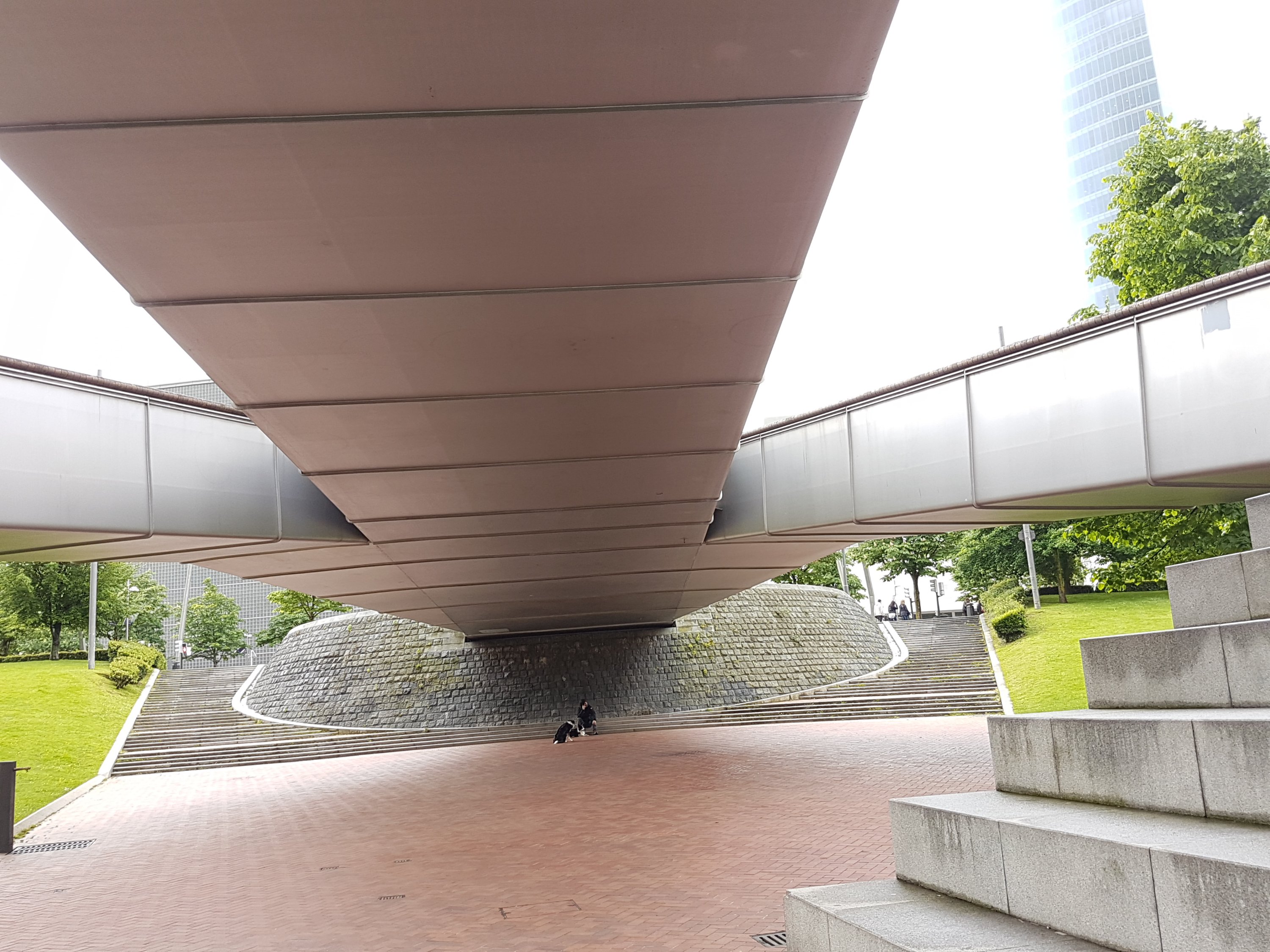
The next day we had choices to make: should we take an ‘official’ Camino variant and follow a riverside route out of town, or take the longer trek through the hills and suburbs? Or take the metro to the end of town?

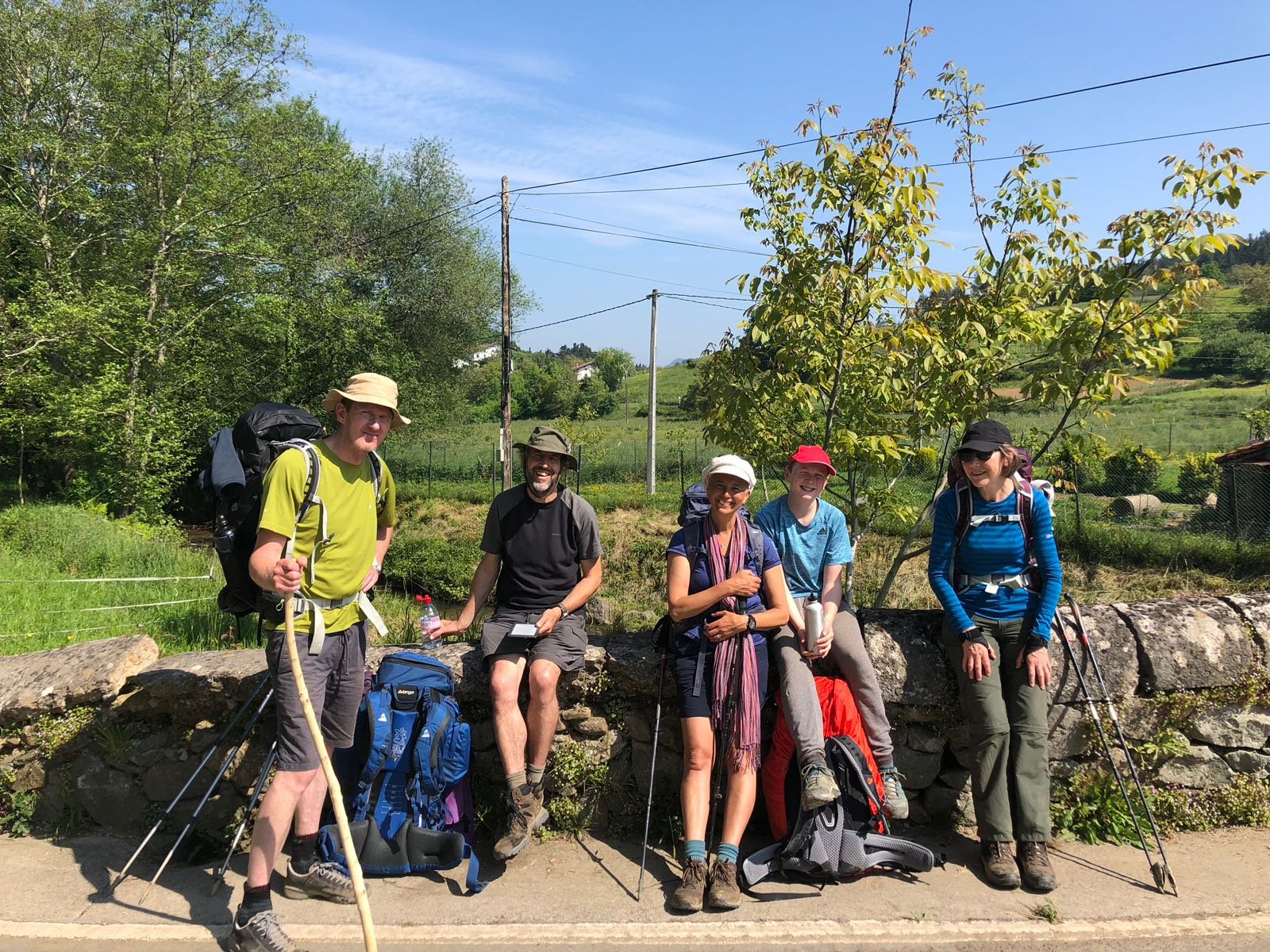

The morning began with a very pleasant walk along the river past the Guggenheim, then further on through the semi redeveloped docks, before I found myself somewhere between Greenwich peninsula and Erith. Busy roads, scrubby wasteland, industrial units. Eventually we reached the famous hanging bridge – like a ferry, but suspended over the water on really long cables to a gantry above.
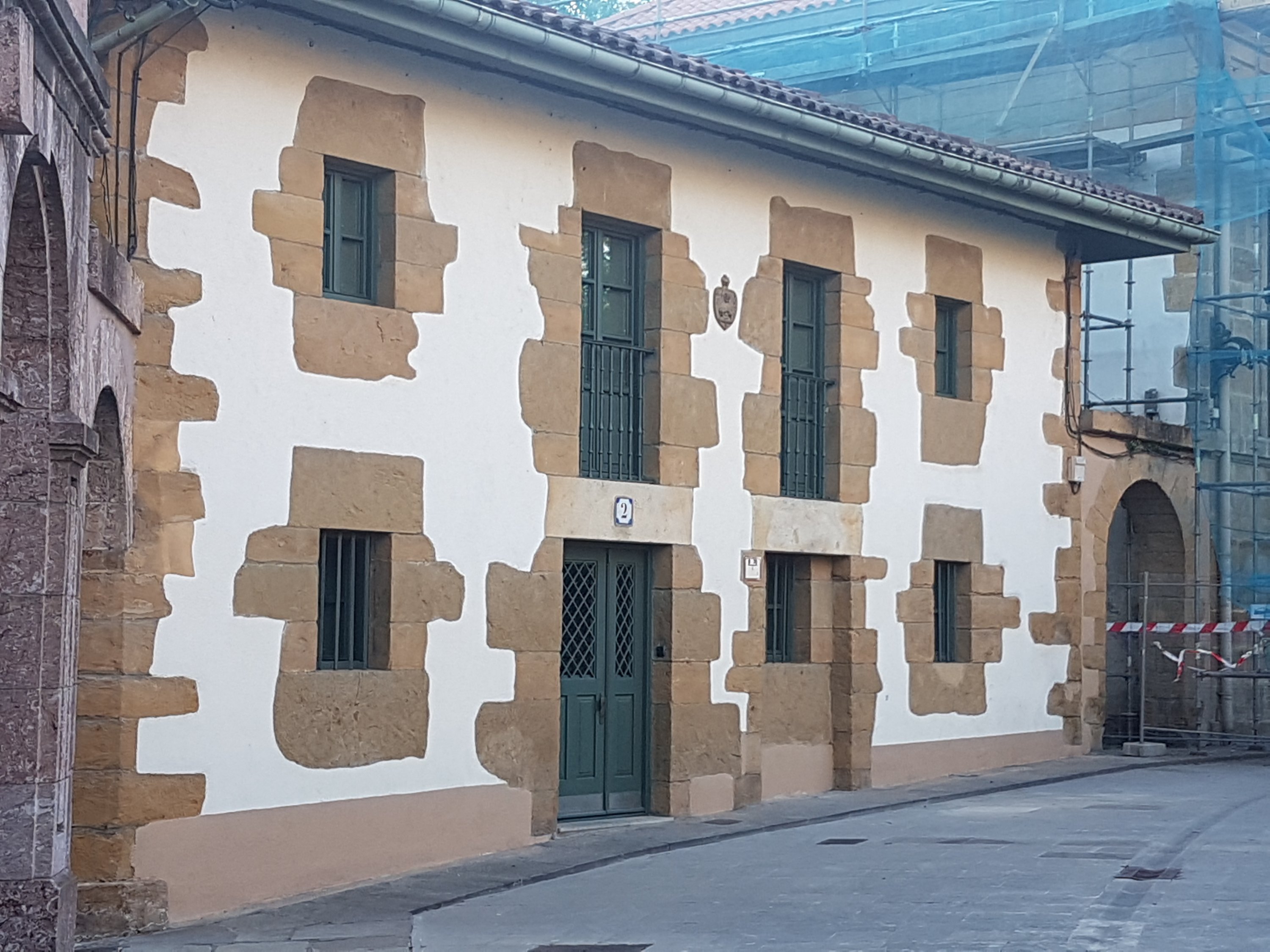
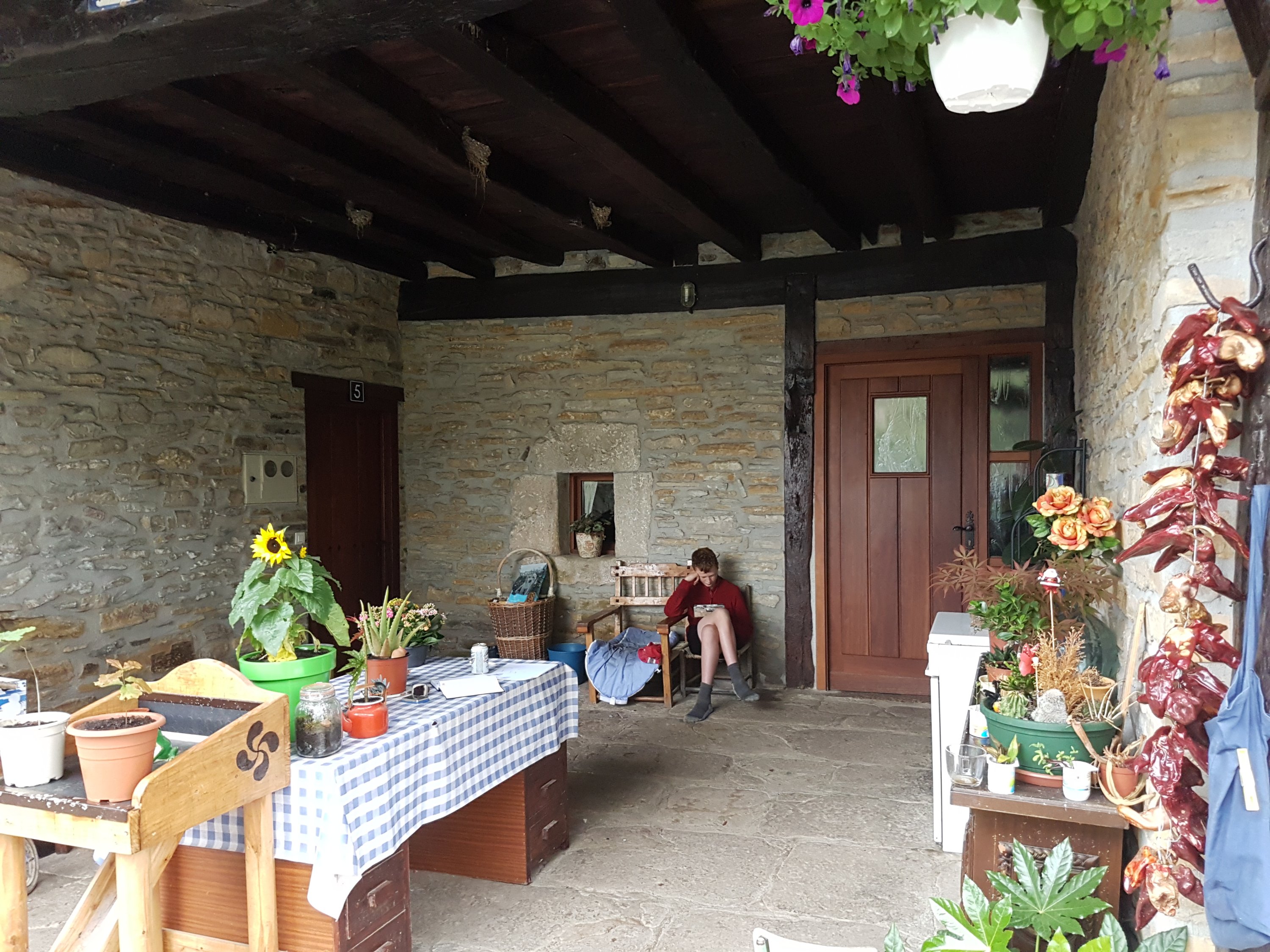


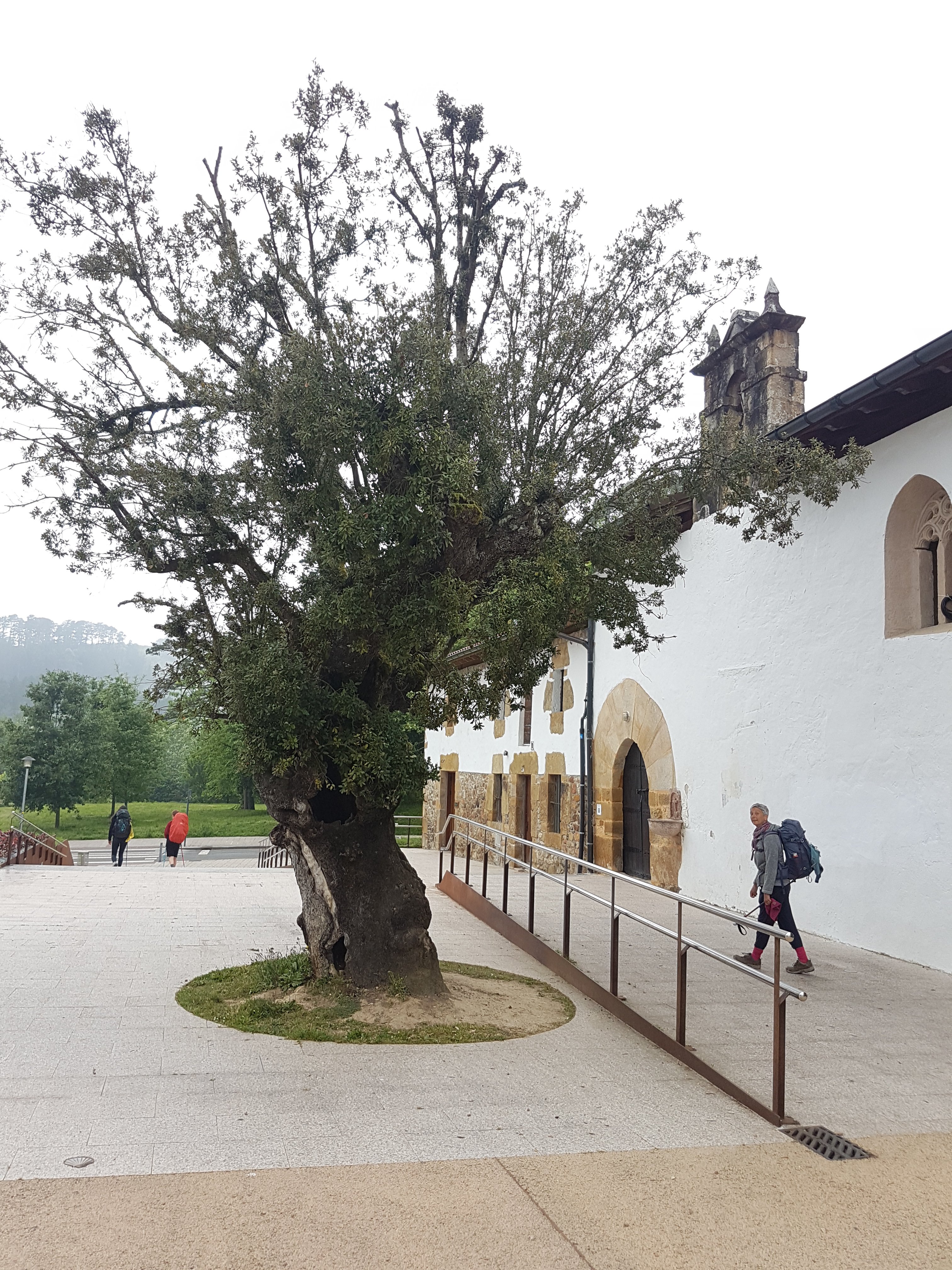
From here we had more choices: to stop and stay, or to press on, up and over a(nother) long hill to the next albergue three hours distant. We walked.
Anxiety about it being my turn to be turned away gave me marching legs. In truth I was tramping; the path an endless cycle path, with pedestrian slow lane. It wove its way over and under the highways to the north of Bilbao, through dormitory villages of the dead or absent, before cutting down along a concrete track with alternately scrappy and pristine plots – a cross between an allotment and a caravan site. Either a chained horse, still in its muddy circle, perhaps a goat or two; or lawns clipped beneath neat rows of fruit trees, fresh turned dark earth pregnant with warming seeds; or wild thickets of bramble.

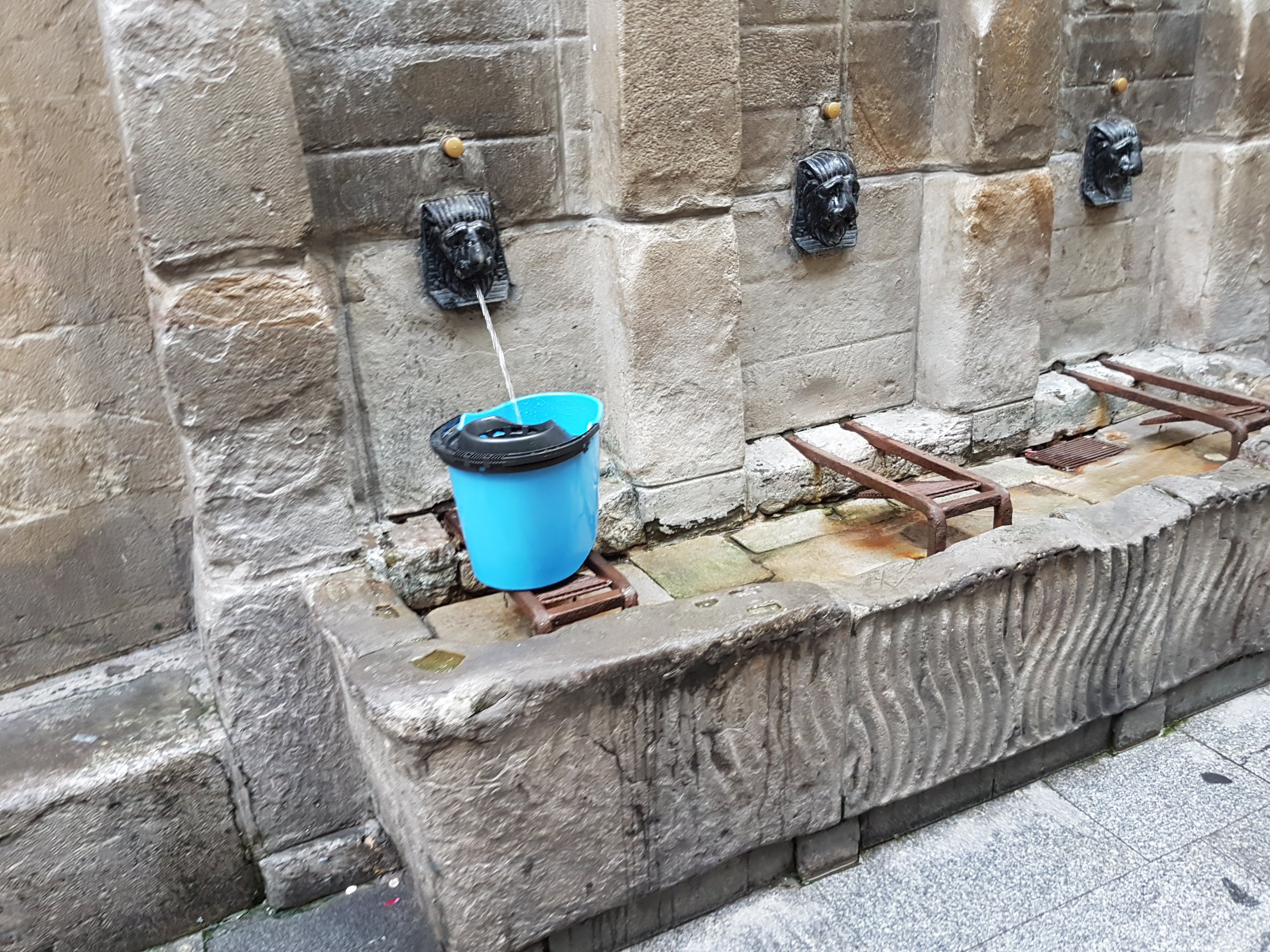

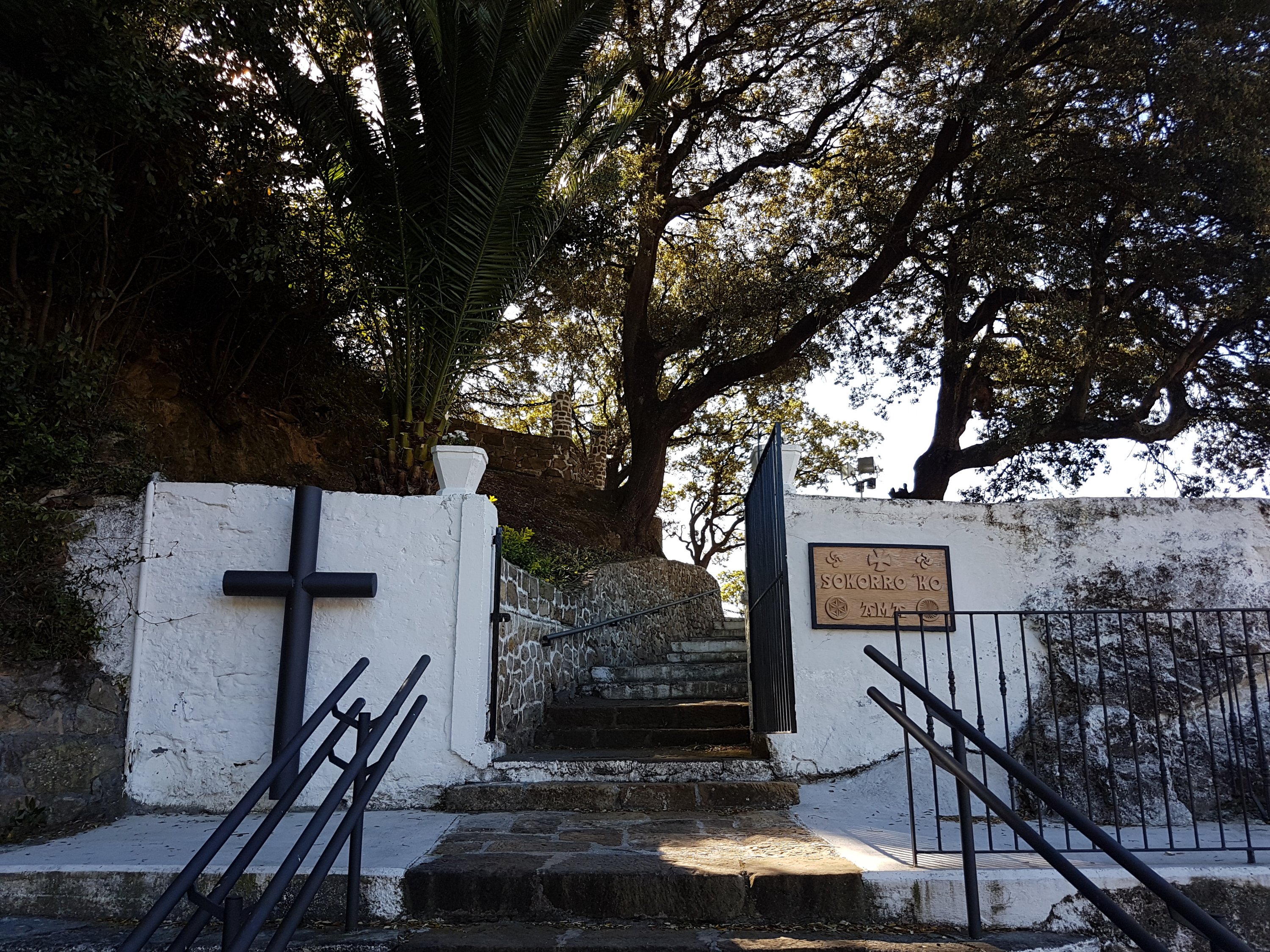

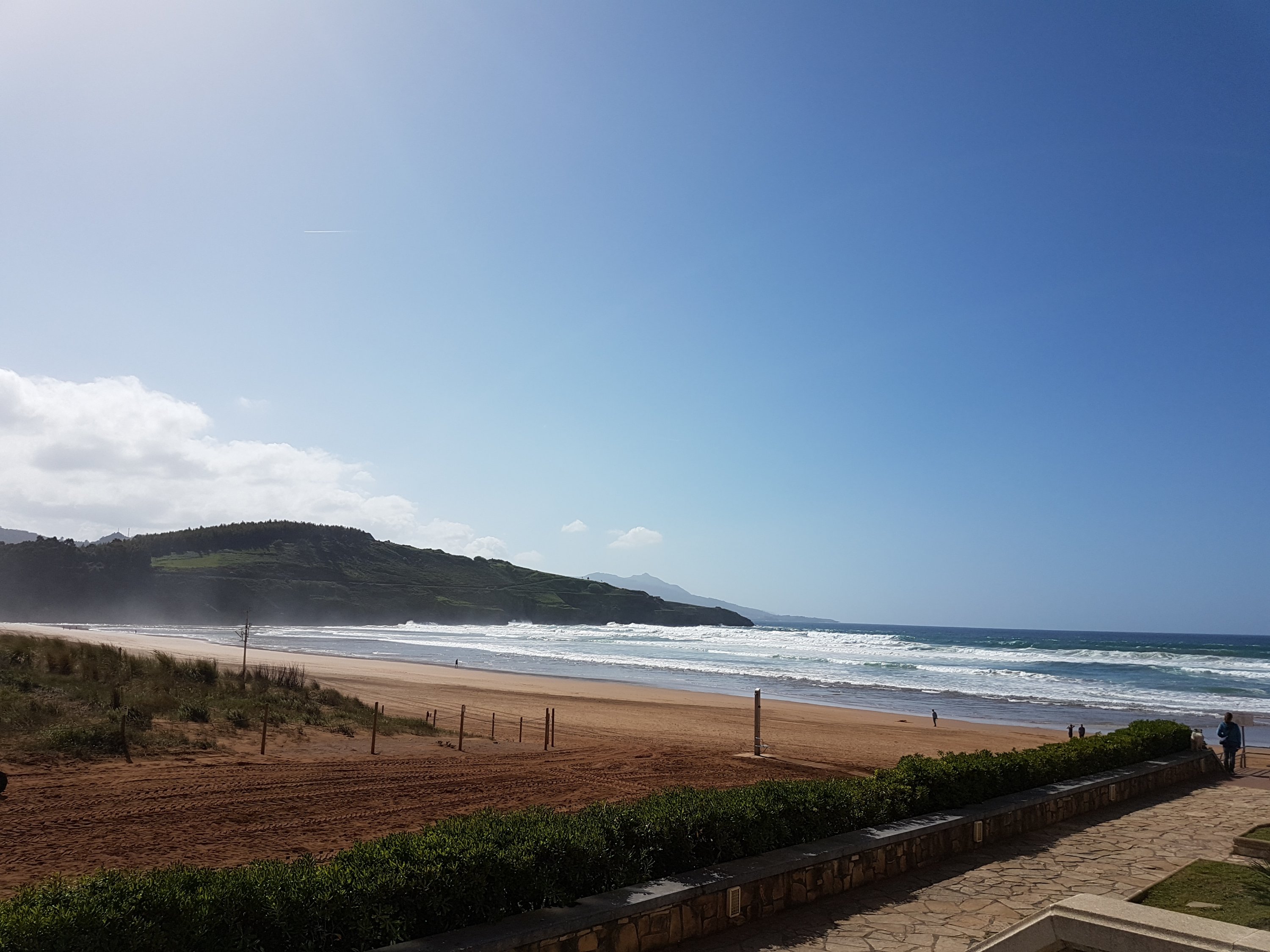

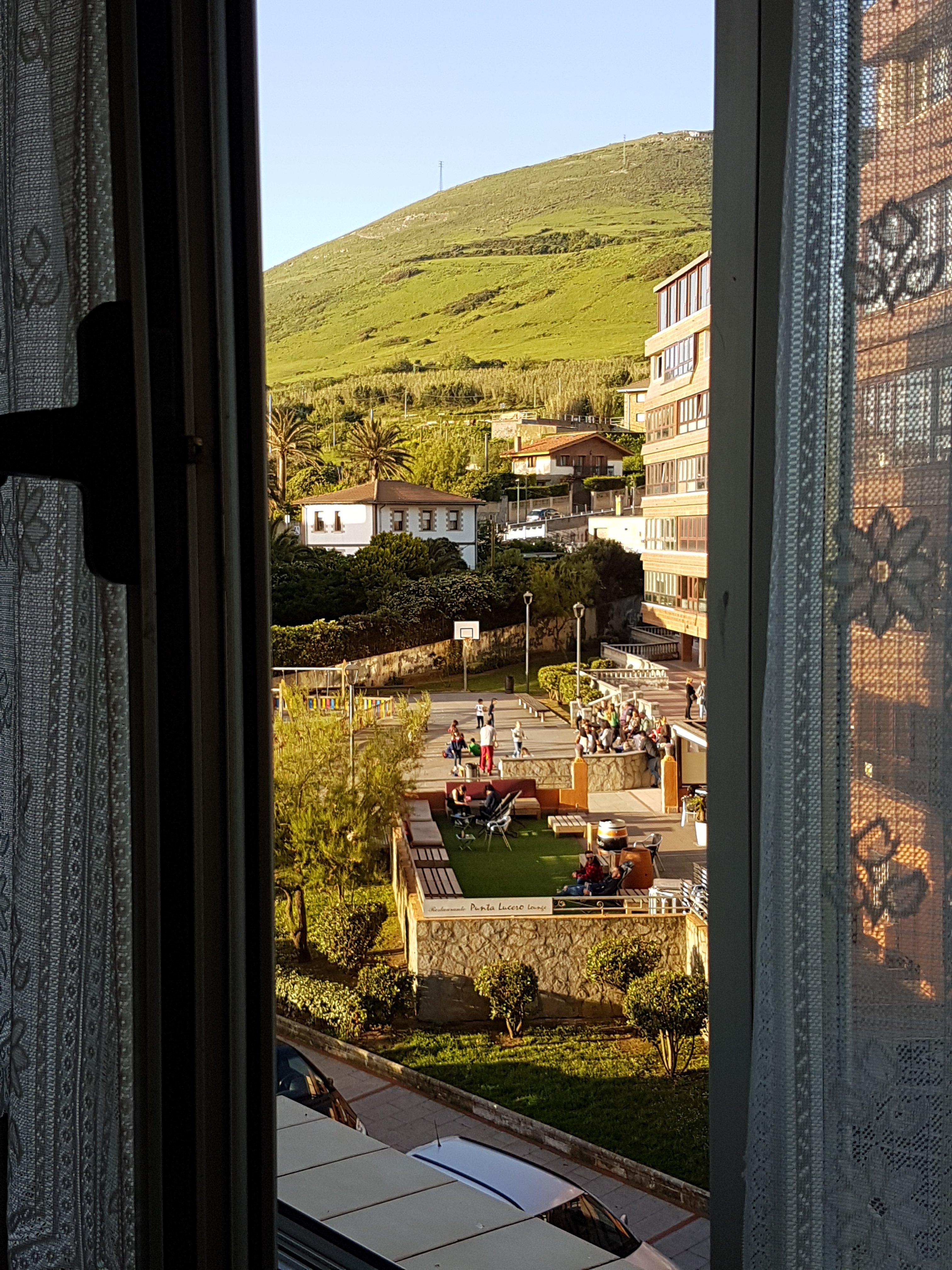
At last the sea appeared, a magnificent beach, a boardwalk traversing the low dunes, a pretty pedestrian bridge over the river, past an ancient church, round a play park, there across the road the albergue, peregrinos sitting outside relaxing in the sun, and on the door pinned a note ‘completo’.
I investigated alternatives – the web’s answer was the time of the next bus back from whence we came. Collapse.
I had asked Wilkie, some days before, how many people over the years had walked this route before us. A hundred million. A very approximate guestimate is that around eighty peregrinos leave Irun every day. Some days we see loads, at other times very few. Some albergues can be booked, some can’t. Posadas, hostels and hotels are sometimes available, at greater cost, sometimes they are miles away. There are lots of us following the yellow arrows.
I am way out of my comfort zone – in dark space.
As we wait for the bus, Tash’s optimism spies a notice next to a bar, and within minutes she has found a beachside apartment that is fantastic.
I feel lucky.

